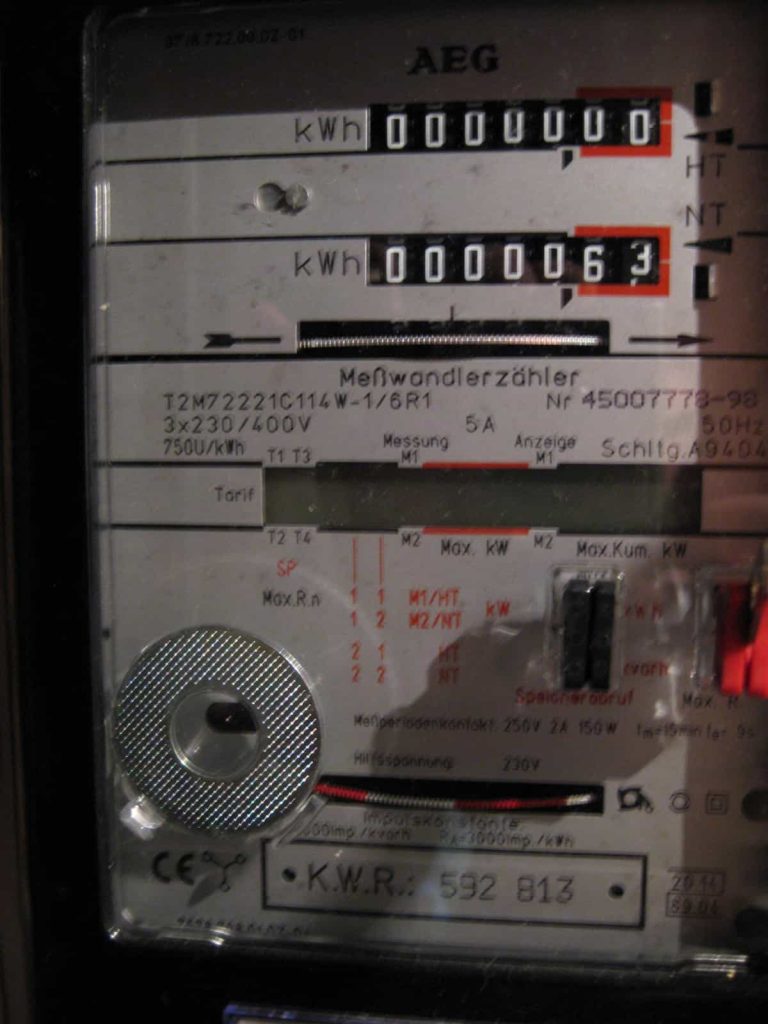
Unlike residential meters, commercial supply is traditionally split between generation and demand charges. While generation is well understood – it is simply the electricity consumed over a certain period of time multiplied by average rate, the demand is something very different and is commonly added on top of the used electricity. So what is demand charge? And how is demand meter different from non-demand one?
What is Demand Charge?
Imagine a business that consistently consumes certain amount of electricity over the course of the day. For example, a restaurant that burns electrical ovens, has a relatively stable demand profile, meaning its electricity requirement is steady every minute and every hour of the day 7 days a week. This is great news for local utility as there is no volatility in energy use. There will be no abrupt spikes or falls in demand that power company should prepare for, allowing it to allocate resources very efficiently. Now let’s look at a different scenario. Imagine a commercial company that requires a large amount of electricity one day a month, but then has relatively small energy footprint for the rest of the month. For instance, a store that receives new inventory shipment, and has to scan all the items into electronic catalog.
The power demand will peak during the scanning process, but then levels off. That creates a dilemma for a local utility. It has to keep enough available electricity on the grid to meet the demand as if the shop required elevated power levels every day of the month. In other words, the power company has to allocate resources that will not be utilized.
To offset these storage or under-utilized resource costs, power companies generally add demand charges to company's energy bills. In two examples above, both businesses might have had the same demand cost per month, but its share of the total bill will be different. For the restaurant, that has constant demand, and therefore higher overall energy utilization, the demand charge might represent about 10% of the total electrical cost, while for the store that fee might be close to 40-50% of the total.
Energy Demand vs. Consumption
The energy demand is measured in kilowatts (kW), while actual power consumption is computed in kilowatt hours (kWh). One 100-watt lamp lightning for 100 hours consumes 10000 watts or 10 kWh. If it is burning without interruption its demand profile is constant at 100 watts or 0.1 kW during this period. Similarly, 10 100-watt lamps will consume 10 kWh over 10 hour period, while their demand will stay constant at 1 kW.
If utility company has two customers: one using one 100-watt lamp for 100 hours, and the other burning 10 100-watt lamps for 10 hours their consumption charge will be the same at 10 kWh. However, their demand fees will be different. One requires only 0.1 kW at any point in time, while the other needs 1 kW. The utility has to factor this difference since it has to provide uninterrupted service to both clients. It will then allocate more resources to meet higher demand from the second client.
How is demand meter different?
Since, for similar electricity consumption profiles two clients might have drastically different demand profiles, local utilities generally install two meters for their commercial customers: one that measures consumption and one that gauges demand. However, not all power company business clients receive two meters, and most importantly most residential clients only have one consumption meter. The reason behind it is that the aggregate demand profile for small commercial and residential customers is quite similar, while the cost of installing two meters is quite high. Therefore, the energy company only mounts two meters when it expects elevated overall power usage as well as fluctuations in demand. The business bill will contain two charges then: one is fixed at the demand peak level over a period, generally a month, and the other is variable for the electricity actually consumed. The demand peak level is determined as the highest demand factor over the course of the month, measured at any 15 or 30 minutes interval. For example, if a company that generally uses 10 100-watt lamps, suddenly connects 100 lamps, there will be a spike, and the demand measured over that period will jump to 10 kW (100 lamps * 100-watts = 10,000 watts = 10 kW). The demand charge will also increase from 1 kW to 10 kW irrespective of the usage for the rest of the month.
Ways to Reduce Demand Charges
Clearly, it is in the best business interest to keep electricity demand as constant as possible to lower the overall energy bill. Generally the best and the simplest way is to try smoothing out demand. Do you need to burn all these stoves or turn all the lights at once? Is it possible to interchange equipment usage to keep demand constant? These are the questions savvy business owners should ask themselves.
Alternately, a business can introduce renewable energy or onsite electricity storage, and level out the peaks in energy utilization. However, these choices are costly and require time investment.
© PowerSetter.com. All rights reserved.
![]() Green energy choices available
Green energy choices available